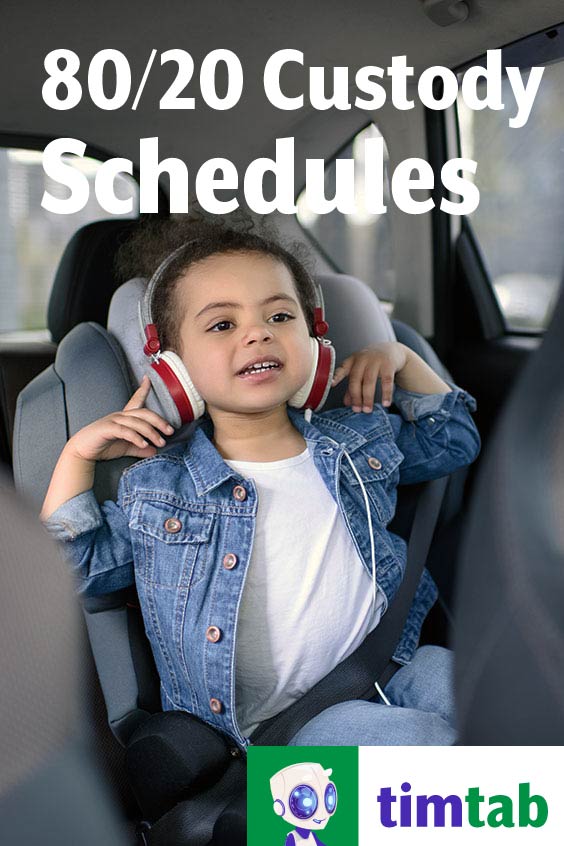80/20 Child Custody Schedules... 3 out of 14 nights examples
An 80/20 custody split means the non-custodial parent has the child or children 3 out of 14 nights on average. Here are the best examples of 80/20 parenting schedules by age.

Tim Tab
AI Software
March 16, 2020
Share article:
These examples of 80/20 custody schedules are some of the top-rated schedules according to Timtab AI software. Timtab finds the best parenting schedules based on factors such as child age and travel time. The example schedules are often recommended when there is an 80 20 percentage split.
What Does 80/20 Custody Mean?
An 80/20 custody schedule means that a child spends 80% of their time in the care of one parent and 20% with the other. That works out to an average of 3 nights out of 14 visiting one parent.
Three out of fourteen is actually 21%. The final percentage can be even higher because of vacation visits.
80/20 custody schedules are used when one parent has primary custody or the arrangement is sole physical custody with scheduled visitation.
The care split is quite typical for a situation where, instead of joint physical custody, a child may be considered to have a custodial parent and a non-custodial parent. The child lives with one parent but spends significant time visiting the other. A better-balanced alternative is joint custody or a 70/30 schedule.
80/20 Custody Schedule for a Toddler
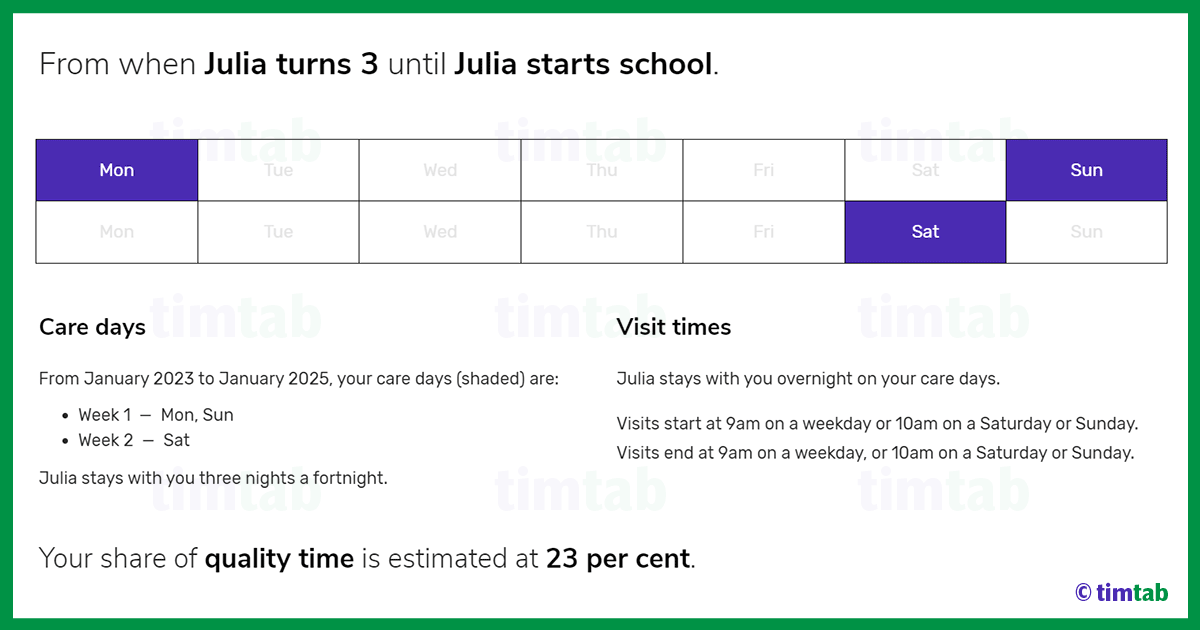
For a baby, toddler or other pre-school child, the ideal parenting plan has frequent visits. The top-rated 80/20 custody schedules have a weekend visit every weekend plus a visit on a weekday.
The recommended schedule has a Monday overnight visit plus an overnight stay on the weekend, alternating between Sunday and Saturday.
- The schedule delivers contact consistency plus a little variety on the weekends.
- The child is never away from the custodial parent for more than 1 night and from the non-custodial parent for more than 5 days.
See also: Best Custody Arrangements for Toddlers
Important message!
Other schedules may be better depending on your situation. Timtab produces individual recommendations based on child ages, travel times and parent preferences.
Join Timtab to find the best schedule for your child or children.
80/20 Schedule for a Child Aged 5 to 12
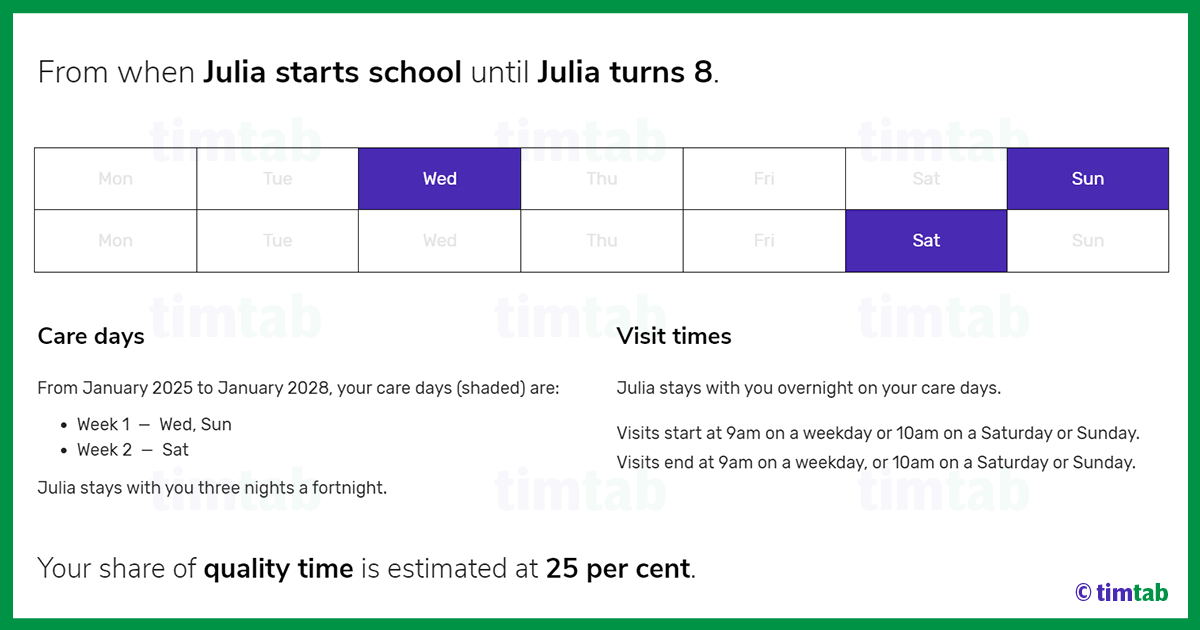
For a child who has started school, the best schedule is similar to the one for a toddler.
Like the toddler version, the example schedule has a visit each weekend plus a visit on a weekday. The only difference is that Timtab has chosen Wednesday as (slighly) better than Monday for the weekday visit.
- Wednesday results in a more even spread of visits with the non-custodial parent across the fortnight.
- For school-age children, Wednesday overnight visits are easily managed. The non-custodial parent can collect the child from school and drop them back the next morning.
80/20 Every Other Weekend Schedule for a Teenager
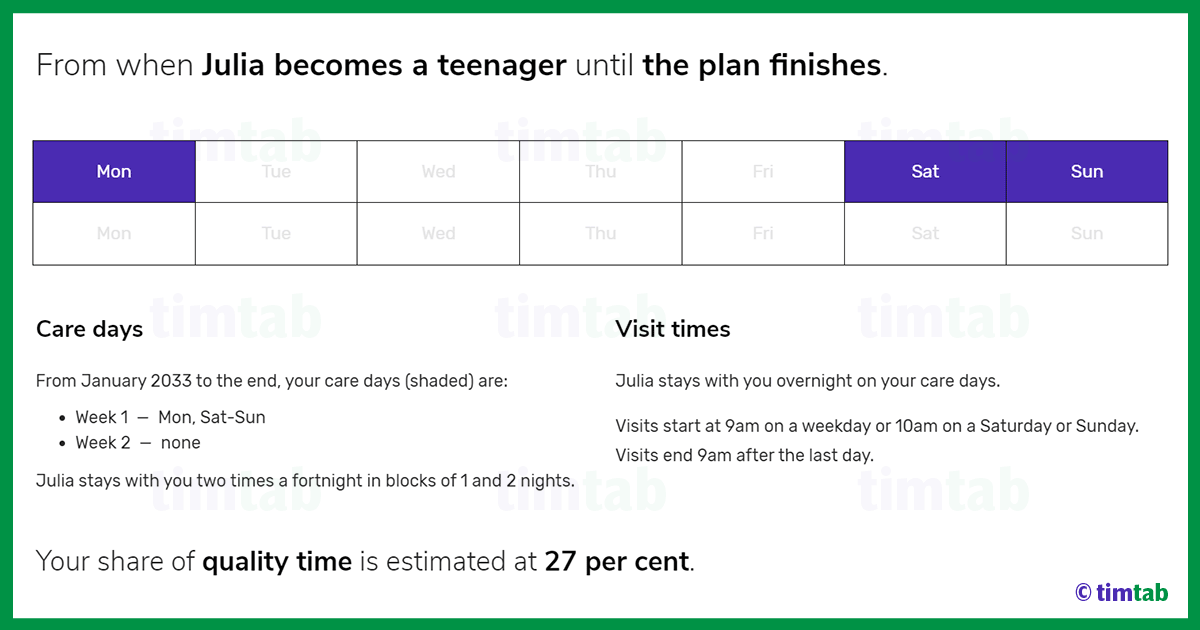
For an older child or teenager, we can move to an every other weekend parenting plan. Quick turnarounds are less important for older children, allowing for alternating weekends with each parent.
But the top rated schedule isn't as simple as just "every other weekend". If the parents live close to one another, a Monday visit can easily be included in the timetable. That way, you avoid gaps of 11 days between visits with the non-custodial parent.
- The alternate weekends with the non-custodial parent consist of 2 overnights and go from Saturday morning through to Monday morning.
- The teen is never away from the custodial parent for more than 2 nights and from the non-custodial parent for more than a week.
Best Schedules for Long-Distance Travel
If the non-custodial parent lives far away, Timtab rates other schedules higher. With longer trips, children are better off with fewer changeovers. The following examples are based on a 90-minute travel time from the non-custodial parent's home to the child's home or school.
Weekend-only schedules are generally better if one-way travel times are 1-2 hours or more.
Distance schedule for a toddler
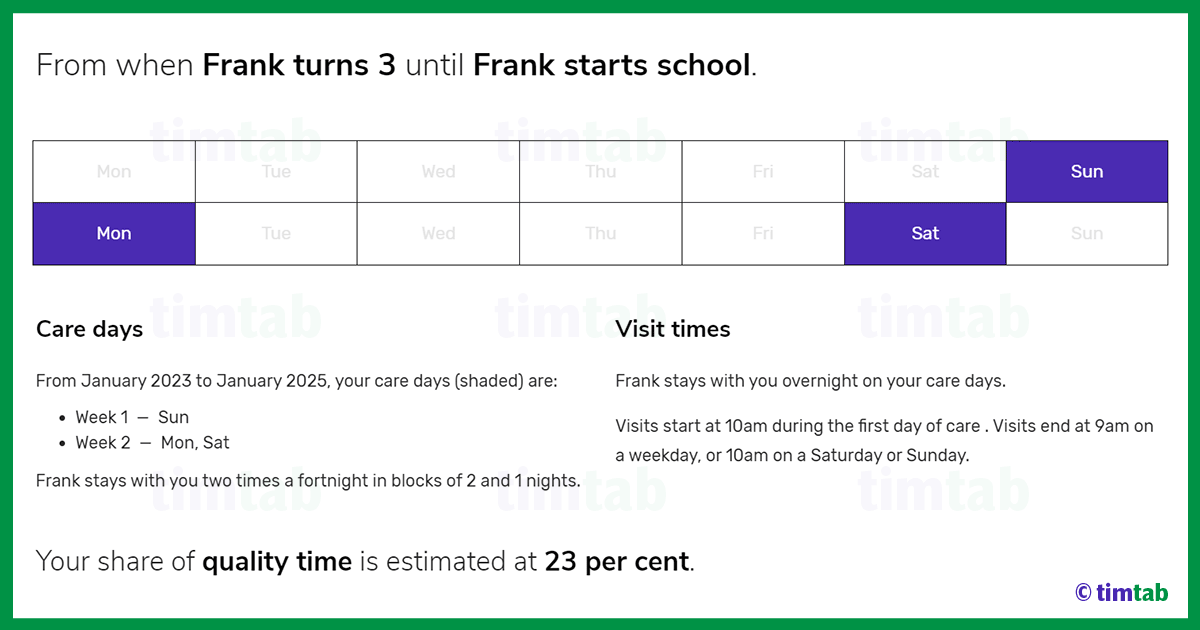
For a toddler / pre-schooler who lives 90 minutes from the non-custodial parent, the best schedule has a visit every weekend. Timtab's choice is for a visit Saturday morning to Sunday, followed the next weekend with a visit from Sunday morning through to Tuesday morning.
School-age child
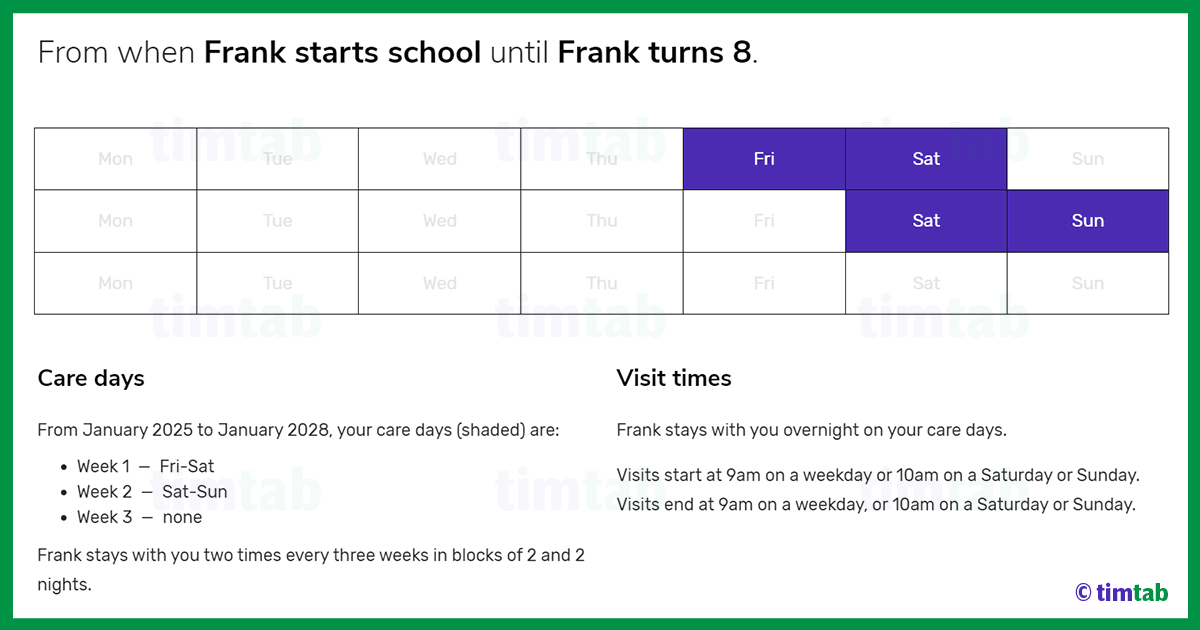
For a young, school-age child, the top-rated timetable provides for a visit 2 out of every 3 weekends. Each visit is for two nights, starting on a Friday in Week 1 and on a Saturday in Week 2.
Older child
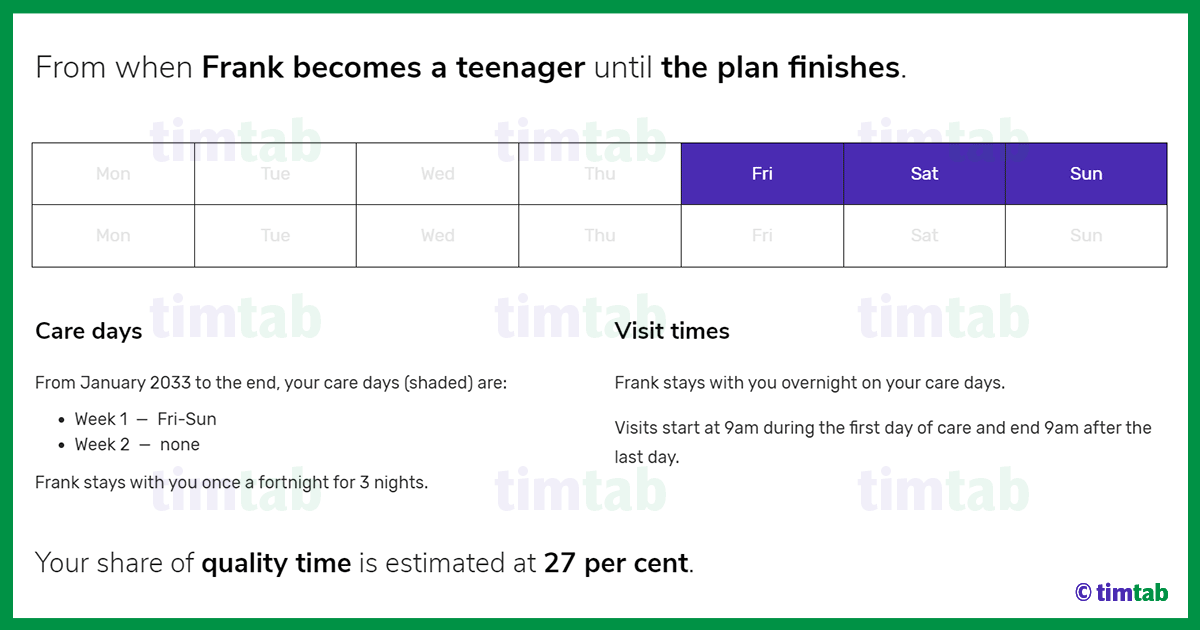
For an older child, the best 80/20 schedule where significant travel is involved is the old-fashioned every other weekend arrangement. The child or teenager has an extended weeked with the non-custodial parent each fortnight, from Friday through to Monday.
